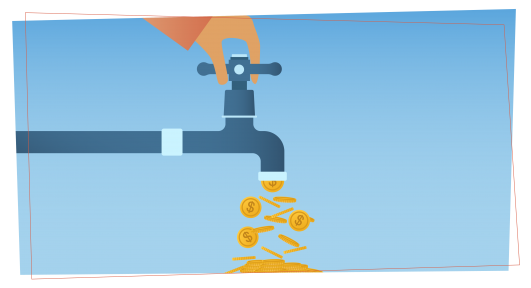4 Ways Small Businesses can Connect with Consumers During COVID-19 & Beyond
Small Business
While there are many uncertainties for businesses during and after COVID-19, one thing is clear: Many businesses need to change or risk failure. By the end of March, 60 major retailers—with more than 50,000 physical retail locations— had closed temporarily and a survey from Main Street America concluded that 7.5 million businesses were at risk of permanent closure. While consumers are spending less overall, they are buying up to 30% more online.
As more and more states allow businesses to reopen, albeit, with nuanced restrictions, it’s not quite business as usual. In order to stay afloat, many small businesses had to innovate and find a way to survive in this new normal. From shifting online to readjusting their cash flow, business owners have drastically changed their operations.
Going forward, business owners will have to continue to strive to find new ways to connect with consumers on increasingly tight budgets. The good news? There are many creative methods to consider.
1. Rethink delivery
The key to survival for businesses is ensuring cash flow into the business. This alone has driven companies to find ways to continue to serve customers despite lockdowns. For retail shops, this can mean turning to eCommerce or curbside pickups. For restaurants, this has resulted in taking online orders, increasing takeaway meals, or offering home deliveries.
Consumers are likely to be on guard and less interested in going out. So the easier you can make the delivery, the better. Not only is this approach customer-focused, but it will reduce foot traffic at your physical location without sacrificing revenue. For businesses required to operate at 25% or 50% capacity, changing up how you deliver your final product can level the playing field.
For those concerned with handling limited capacity, you can consider creating a pre-paid reservation system to make everything run smoothly. Black Sheep Restaurant in Hong Kong has created a COVID-19 Playbook that details all of their procedures from delivery to cost management.
2. Embrace the digital world
For many retailers, adding an eCommerce option can allow them to move inventory, increase cash reserves, and reconnect with customers. But opening an online store isn’t the only way to boost cash flow.
Events that might have been held live on location can be turned into exclusive live streams. Take online fitness lessons as an example. Many fitness businesses, such as Downtown Yoga in Memphis, Tennessee, have turned to virtual sessions to revive their revenue streams. For other service-oriented businesses, you can offer free or discounted consultations through Zoom or Skype.
Expanding your digital marketing plan is another way of using social distancing to your advantage. You can invest in content marketing with blogs, email lists, and outreach on social media to bring more awareness to your business and promote deals.
3. Create unique, reoccurring offers
COVID-19 has altered consumer behavior, and even as business appears to return to normal, this new mindset will likely stick around. Stockpiling and seeking out savings are and will continue to be top priorities for your customers. How can you rearrange your business model to appeal to this mindset? There are a few options:
- Memberships
Create a custom, reoccurring package to ensure long-term cash flow while providing customized service. Using a subscription model, you can offer a certain amount of meals per week, exclusive perks like free monthly products, or form partnerships with other businesses to provide unique packages. Since memberships are an ongoing service, this is an excellent way to stabilize your business income. - Gift cards
If you can’t reopen right away or you're waiting on new inventory, you can allow your customers to buy gift cards—online or offline, even at a discounted rate. Providing this option gives you some immediate capital without sacrificing service. - Renting
Instead of relying on sales, is it possible to rent your products? While this may require extra sanitization efforts when items are returned, it can be an excellent revenue source. Like the membership option, renting out equipment or products can provide a regular revenue stream while you reorganize. Owners of Cyclebar East Cobb, a cycling studio in Marietta, Georgia, allowed customers to rent stationary bikes to stay fit during the lockdown.
4. Ask consumers what they need
Don’t forget, you can always survey your community to discover new ways to pivot. Do this by connecting with your customers, employees, and suppliers through social media or even just calling them. One example is Lively Run Dairy, where the owners realized that they could buy excess milk and make cheese to donate to food banks, rather than let farmers dump it. They turned to GoFundMe to help fund their idea — and it worked. Within a day they had met their goal of $20,000.
Simply keying into consumer wants and needs during this time can help you discover new ways to stay connected and retain customers—even if you aren’t breaking the bank.
Working towards recovery
COVID-19 is pushing businesses to evolve faster than ever, and by the time stores officially reopen, it’s likely consumers will have become accustomed to a more virtual—and more personalized—experience. Many of the solutions that will help you stay in touch with your customers are not only short-term measures but can become long-term revenue streams.
Before you can decide which path is right for you, evaluate your cash flow so you’ll have a clear understanding of where you can afford to spend.
Photo credit: vector created by pikisuperstar - www.freepik.com


